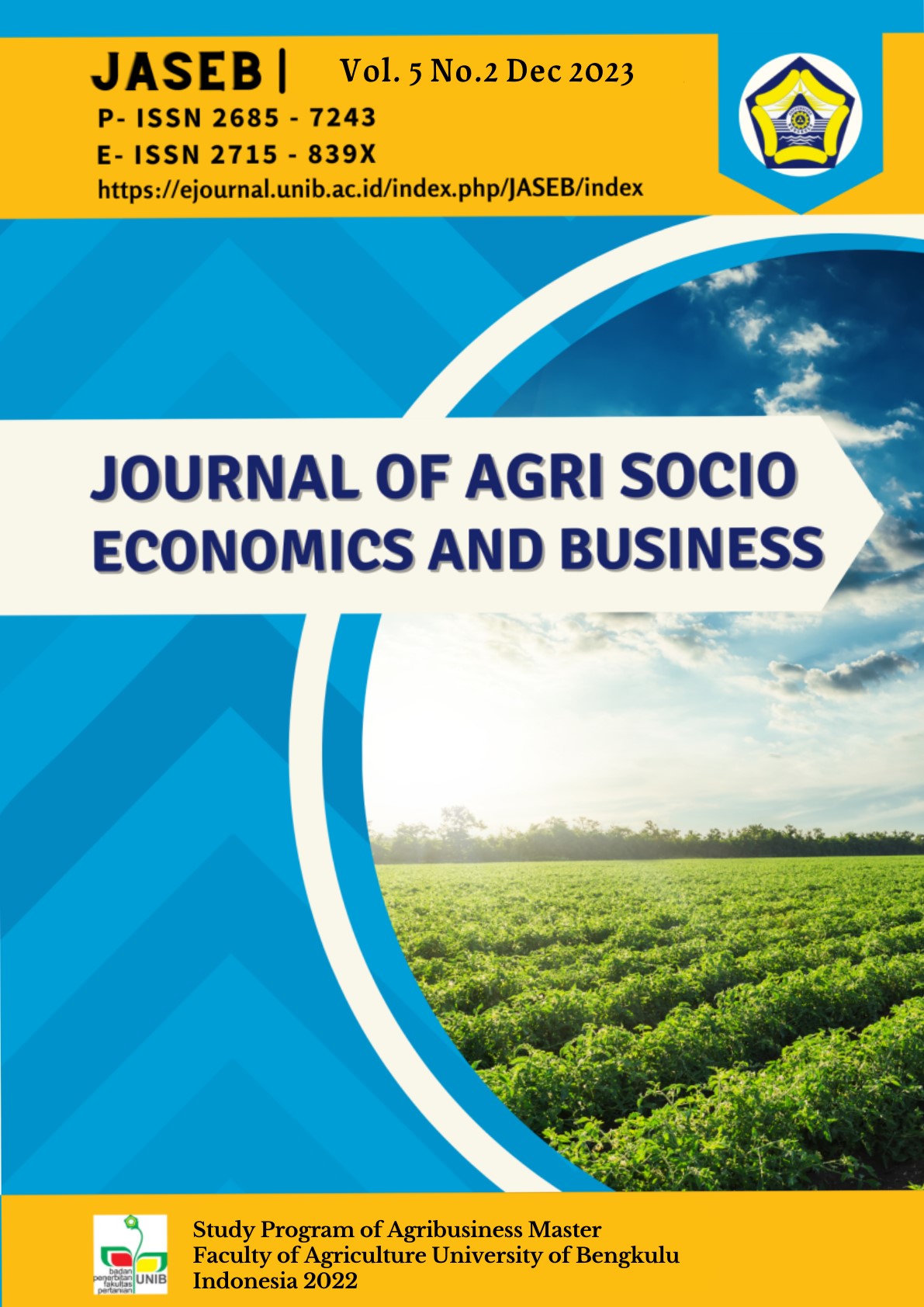Main Article Content
Abstract
Enggano has an agricultural area of 8.618 hectares with production in 2019 of 10.040 tonnes. This research aims (1) to identify internal and external factors in the development of bananas; (2) to analyze alternative formulations for appropriate strategies; and (3) to set strategic priorities in the developing of banana. The research began with the collection of data interviews and the distribution of angket. The data was then processed using SWOT analysis by creating the IFAS and EFAS matrix, as well as to determine the appropriate strategy using QSPM analysis. The number of respondents was 28 people (25 banana farmers, 1 food and holticultural crops, 1 land science lecturer and 1 agroecology lecturer). The results of the research are based on the IFE analysis, an internal factor that affects the development strategy of bananas on the island of Enggano from the main strength is that bananas are the best products in the island. While the main weakness is the lack of cooperation with existing partners. Based on the EFE analysis, the external factor that influences the strategy of development of banana in the islands of Enggano of the main opportunity is the high demand of the market. The appropriate strategy to use the results of the SWOT and QSPM analysis is to increase production through the expansion of land with suitable climate/weather conditions and the availability of production input and experience to meet the high demand of the market.
Article Details
Copyright (c) 2023 Rizki Amelia Rosyada, Basuki Sigit Priyono, Indra Cahyadinata

This work is licensed under a Creative Commons Attribution-ShareAlike 4.0 International License.
An author who publishes in the Journal of Agri Socio Economics and Business agrees to the following terms:
Author retains the copyright and grants the journal the right of first publication of the work simultaneously licensed under the Creative Commons Attribution-ShareAlike 4.0 License that allows others to share the work with an acknowledgement of the work's authorship and initial publication in this journal
Submission of a manuscript implies that the submitted work has not been published before (except as part of a thesis or report, or abstract); that it is not under consideration for publication elsewhere; that its publication has been approved by all co-authors. If and when the manuscript is accepted for publication, the author(s) still hold the copyright and retain publishing rights without restrictions. For the new invention, authors are suggested to manage its patent before published. The license type is CC-BY-SA 4.0.
Journal Agri Socio-Economics and Business is licensed under a Creative Commons Attribution-ShareAlike 4.0 International License.
